Cambridge Audio Duo Phono Stage-Headphone Amplifier
If you looked at the title above, shook your head, and said, “Huh?” I wouldn’t be surprised. I’d never seen a standalone phono stage that also contained a headphone amp either. That’s only one of the surprises offered by the Cambridge Audio Duo ($299.99 USD).
For another: It’s not uncommon to see in the specifications of phono cartridges something that reads, say, “L/R Balance: ±1.0dB.” Granted, 1dB isn’t much in the cosmic scheme of things, but it still might mean that you have to cock your head to one side, or sit slightly off center on your listening couch, to hear the proper imaging. Well, the Duo has you covered: if your cartridge sounds unbalanced, you can adjust the Balance control on the Duo’s rear panel and forget about it. Very neat! It’s the first one I’ve seen on a standalone phono stage — but it’s such a good idea, I can’t imagine some other firm hasn’t also offered it.

Description
Cambridge Audio is a well-established British firm that makes a wide array of high-fidelity audio gear. The Duo looks like many Cambridge models in having a front panel and controls of titanium-colored aluminum — quite posh. Those controls are, from left to right: a power on/off button, at its center a tiny status LED; to its right, two equally tiny LEDs that indicate which input is active, moving-coil (MC) or moving-magnet (MM), with a button to their right to toggle between those settings. Just right of center is a large volume dial for the headphone amp. Its operation is incredibly silky; very pleasant to use. At far right is the 1/4” phone jack for a pair of stereo headphones.
Turn the Duo around to see, at far left, a three-pronged IEC power inlet; the Duo comes with both US- and UK-style power cords, both quite stout for a component that draws only 10W. Next are RCA output jacks, the Balance control (±4dB), the MM input RCA jacks, a knurled ground post for the turntable, and the MC input RCA jacks. All RCAs are gold-plated. The Duo measures 8.5”W x 1.9”H x 6.2”D and weighs 2.1 pounds. Its limited warranty is for two years, parts and labor.

The Duo’s specifications are overall very impressive. For an input signal of 3.35mV (MM) or 0.305mV (MC), the Duo sends 300mV to your preamplifier. According to the owner’s manual, the gain is 39dB (MM) or 60dB (MC), with signal/noise ratios of >90dB (MM) and >70dB (MC) and negligible levels of harmonic distortion: at worst, 0.02%. The MM input is designed to work into 47k ohms with 100pF of capacitance, while the MC prefers to see 100 ohms; both are typical for these types of cartridge.
Listening
The source I used for this review comprised my Dual CS5000 turntable and tonearm and a Shure V15 Type V-MR moving-magnet cartridge — except for a short period when the V15 was replaced with the less-expensive M97xE, this has been my reference vinyl playback system for the last 20-some years. Last I checked, the replacement (but Shure-sourced) V15 stylus, made of unobtanium, is still in respectable shape. Guess I’ll someday need to look at third-party replacement styli.
As I often do, I began my listening with “Money for Nothing,” from a reissue of Dire Straits’ Brothers in Arms (2 45rpm, 180gm LPs, Warner Bros./Mobile Fidelity Sound Lab MFSL 2-441). Brother! Did this phono stage have bass slam. The soundfield, in both depth and breadth, sometimes extended beyond the speakers’ outer edges. Instrument articulation was up there with the best. The Duo really drew me into paying extremely close attention to the music, and let me hear some aspects I hadn’t noticed before. Very satisfying. I continue to marvel at how good MFSL pressings sound.
“You Can Call Me Al,” from Paul Simon’s Graceland (LP, Warner Bros. 25447-1), is another favorite. Simon’s voice and the pennywhistle in the break were nicely crisp, though the overall sound of this recording is mellow. The backing singers were placed just behind Simon, to his left/our right. Again, the percussion and bass were meaty, with lots of slam, and the horns were extremely tight. An altogether excellent sound through the Duo.

To test a component’s soundstaging, I almost always rely on the amazing sound of “Finally Found a Reason,” from Art Garfunkel’s Fate for Breakfast (LP, Columbia JC 35780). Garfunkel’s high, airy tenor is smack in the middle, well out front; the synthesizer, high and low guitars, bass, and drums swirl in the background; and the backing singers are clustered around and slightly behind Garfunkel — all of it well sorted out by the Duo. I had to listen to this one several times to drink it all in, including first-rate articulation of instruments. Garfunkel’s voice had just a hint of sibilance.
I upped the funk factor with “Getaway,” one of my favorite cuts from The Best of Earth, Wind & Fire (LP, Columbia PC 35647). That this band was one of the tightest ever came through via the Duo. The rat-a-tat of the snare was so crisp; no slop whatsoever — the same went for the trumpets. The soundstage on this track isn’t precise: the singers are out front, the band “generally” behind. Given how specific it had been through the Duo with other cuts, this must be how the tune was recorded. The Duo gave me nothing to kvetch about; it did its job, not inserting itself into the playback — except, perhaps, for the slam. Its background was very quiet — I had to turn my system’s volume all the way up with no music playing to hear any hiss.
For something completely different, I turned to the cover of Kris Kristofferson’s “Me and Bobby McGee” on Gordon Lightfoot’s If You Could Read My Mind (LP, Reprise 6392). I often play this recording when I’m listening for how a component handles very delicate sounds — in this case, the sound of hands rhythmically slapping a thigh. That’s the only percussion on this track, and it came through extremely well with the Duo — as good as I’ve heard it through any phono stage. Ry Cooder’s bottleneck guitar, the other guitars, and the bass also came through with complete purity. Again, quite satisfying.
Next came “Love Song,” from Lani Hall’s first solo album, Sundown Lady (LP, A&M SP4359). If Hall’s name doesn’t ring a bell, you might know the group for which she was the lead singer: Sergio Mendes & Brasil ’66. She’s also Mrs. Herb Alpert, the A of A&M Records and a recording artist in his own right. Hall’s voice is strong and confident, and can sound a bit strident through the wrong system. Not here. The confidence came through, but without stridency.

One of my all-time favorites is “Four Brothers,” from The Best of The Manhattan Transfer (LP, Atlantic SD 19319). In 1947, Woody Herman’s “Herd,” a big band, had a sax section comprising three tenors and one baritone: Zoot Sims, Serge Chaloff, Herbie Steward, and Stan Getz. Herman’s arranger, Jimmy Giuffre, wrote “Four Brothers” to show off the section, with each player taking a solo turn. Later, the vocal group Lambert, Hendricks & Ross did a vocalese version with words by Jon Hendricks, and that’s the version sung by Manhattan Transfer. The words fly by so quickly that they turn to mush through an inferior system. No problem with the Duo — I could understand every word. The soundstaging on this recording is precise: first voice to the left, each succeeding voice slightly farther right. The Duo reproduced all of this accurately, and conveyed the trumpet accents — extremely short bursts of sound — with zero slop.
Speaking of Lambert, Hendricks & Ross, I thought another good test of the Duo’s reproduction of women’s voices would be Annie Ross’s solo in “Twisted,” from The Best of Lambert, Hendricks & Ross (LP, Columbia PC 32911). Many of you have heard this song, with words by Ross set to Wardell Gray’s composition, sung by Joni Mitchell on her Court and Spark (1974), but this is the original recording. Ross sings this tongue-twister very quickly, and the technical deficiencies of the 1960 recording don’t help. But the Duo extracted the words from the groove as well as any phono stage I’ve heard.
Recently, I discovered an excellent torture test for phono cartridges and preamps: “A Swedish Rhapsody,” from Hugo Winterhalter Goes . . . Continental (LP, RCA Victor LSP-2482). Winterhalter was an ace at “elevator music,” and through many phono stages the shrillness of this 1962 recording can give you a headache — something I blame on RCA’s attempts to make their recordings sound good on limited-bandwidth AM radio. That’s particularly true of this cut, which features a piccolo, an accordion, and violins playing in their highest register. On my friend’s system (Technics, Nagaoka, McIntosh, Adcom, JBL), the sound is hideous — I want to rip my ears off, it’s so distorted — and I place the rest of the blame on the McIntosh’s phono preamp. But the Duo tamed this beast nicely, with only the tiniest breakup on some of the really high piccolo and violin notes.

Finally, I listened to “So What,” from a fabulous reissue of Miles Davis’s Kind of Blue (2 45rpm, 180gm LPs, Columbia/Legacy/Mobile Fidelity Sound Lab MFSL 21-45011). I’ve read that this is perhaps the biggest-selling jazz recording of all time, and I can hear why. Here are six guys in total harmony, each totally in tune with the vibe and each other. The Duo was more or less inaudible, a virtual straight wire with gain — the highest praise any type of amplifier circuit can earn.
Then there’s the Duo’s headphone stage. I don’t listen much through headphones, though I have a perfectly fine pair of Grado Labs SR80s. I tried a number of recordings through the Duo’s headphone amp and came away very impressed. When headphones are plugged into the Duo’s front-panel jack, the output to the preamplifier is cut. The sound was excellent — a bit brighter than through the amp and speakers, but not distressingly so. Once again, there was no background noise unless I turned the volume up all the way with nothing playing. With music playing, there was never any hint of anything other than the music. The Duo’s headphone stage was perfectly capable of driving my Grados to the threshold of pain and beyond. As I listened, my indifference to headphones changed — I listened far longer through my Grados than I’d anticipated.
Comparison
I played Miles Davis’s “So What” first through my Linn Majik 1P preamp, which I bought in 1996 because its phono stage was so much better than that of my previous preamp. I was curious to hear if the Cambridge Duo would include enough of the 22 years’ worth of technological advances since 1996 to better the Linn.
The Majik 1P’s sound was very familiar: clean, dynamic, without distortion, with good reproduction of the double bass and drums, and a midrange clean as a whistle. There aren’t many highs in this recording, so I couldn’t really judge them, but the Linn sounded very clean, almost soothing. My kind of gear.
The Duo’s performance was everything the Linn’s was, but just that tiny smidge better: a bit more depth to the lows; if possible, a teensy bit more clarity to Davis’s trumpet; and absolutely clean reproduction of bass and drums. The Linn is a very fine performer; the Duo topped it, if only by a hair.
Conclusion
With every review I write of a turntable, cartridge, or phono stage, I’m amazed at the high quality of today’s analog gear. Sometimes it takes me some time to succumb to its charms; other times, I pretty much fall in love at first hearing.
The latter was the case with the Cambridge Duo. Its sound was almost always steady, calm, reliable — very British characteristics. But when presented with strong rhythms, it could do something else very British: kick out the jams like a Marshall amp whose volume knob goes up to “11.” Many receivers, amplifiers, and preamplifiers from the 1980s and ’90s don’t have phono stages. If you have one of those and want to join the vinyl revival — believe me, it’s worth it — Cambridge Audio’s Duo should be at the top of your list. It’s a stellar achievement, and especially for the price.
Associated Equipment
- Analog source — Dual CS5000 turntable with Shure V15 Type V-MR cartridge
- Preamplifier — Linn Majik 1P
- Power amplifier — NAD C 275BEE
- Speakers — Acoustic Energy Radiance 3, Advent ASW-1200 subwoofer
- Interconnects — Dayton Audio, Dual (captive phono cable), Straight Wire
- Speaker cables — Acoustic Research 14-gauge
- Headphones — Grado Labs SR80
Product Features
- High quality moving magnet and moving coil phono stage
- Built-in high quality headphone amp
- State-of-the-art switch mode power supply
- New surface mounted circuit board layout
- 1/4″ headphone jack
- Built-in subsonic filter (always on)
- Balance control
- 0.5-watt standby power consumption
- Auto power down feature
- Premium quality aluminum and steel construction
Product Specs
- Max Power Consumption: 10W
- Cartridge Support: Moving Magnet and Moving Coil
- Gain @ 1KHZ: MM: 39dB;MC: 60dB
- Nominal Output: 300mV
- Sensitivity for Nominal Output: MM: 3.35mV | MC: 305uV
- Equivalent Input Noise (A-Weighted): MM: ~0.09uV;MC: ~0.08uV
- RIAA Curve Accuracy: +/- 0.3dB 30Hz-50Hz
- Signal to Noise Ratio Grounded Inputs Ref. 1v Output (20HZ-20KHZ BW): MM: >90dB; MC: >70dB
- THD+N 1KHZ (20-20KHZ BW): MM: <0.0025%; MC: <0.20%
- Input Impedance: MM: 47k Ohms; MC: 100 Ohms
- Input Capacitance: 100pF
- Overload Margin: >30dB
- Crosstalk @ 10 kHz: MM: >85dB | MC: 75dB
- Subsonic Filter Characteristics: -3dB @ 12 Hz 6dB/Octave
- Dimensions (H X W X D): 1.9 x 8.5 x 6.2″
- Weight: 2.1 lbs.

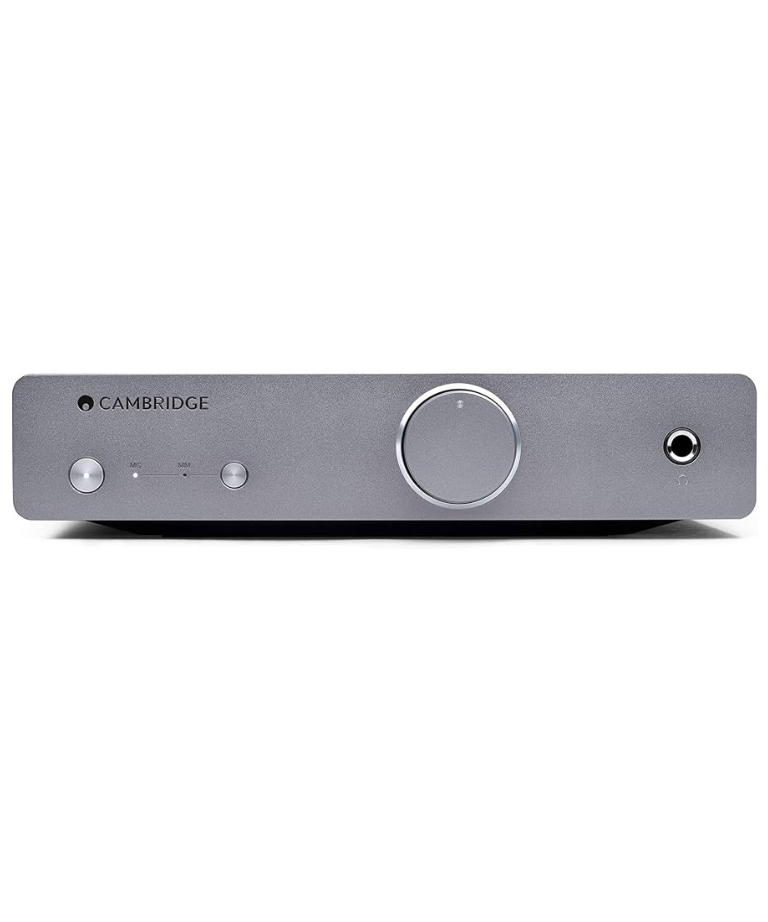
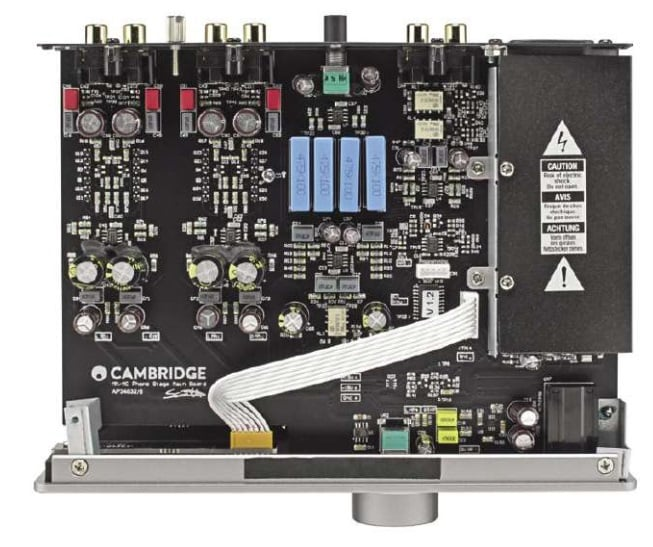

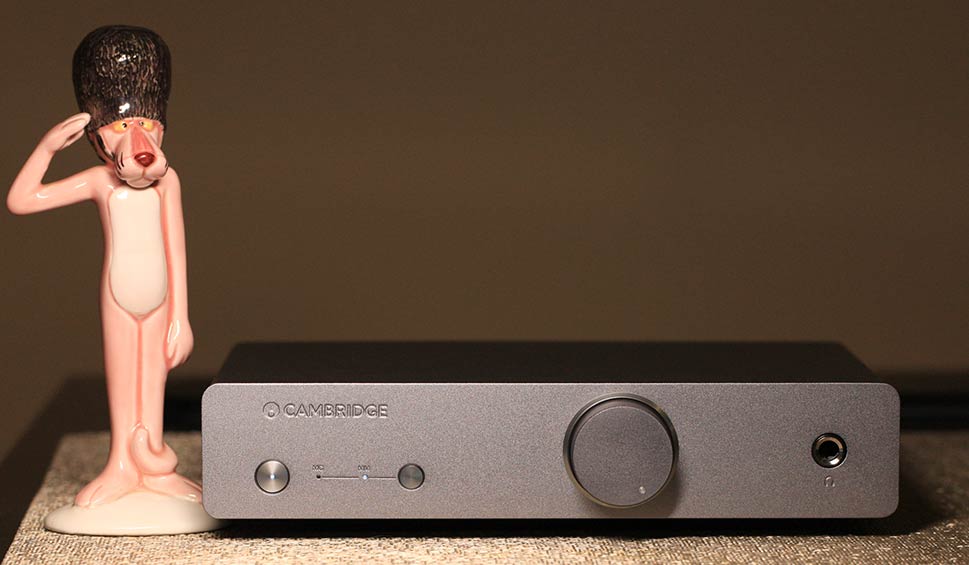
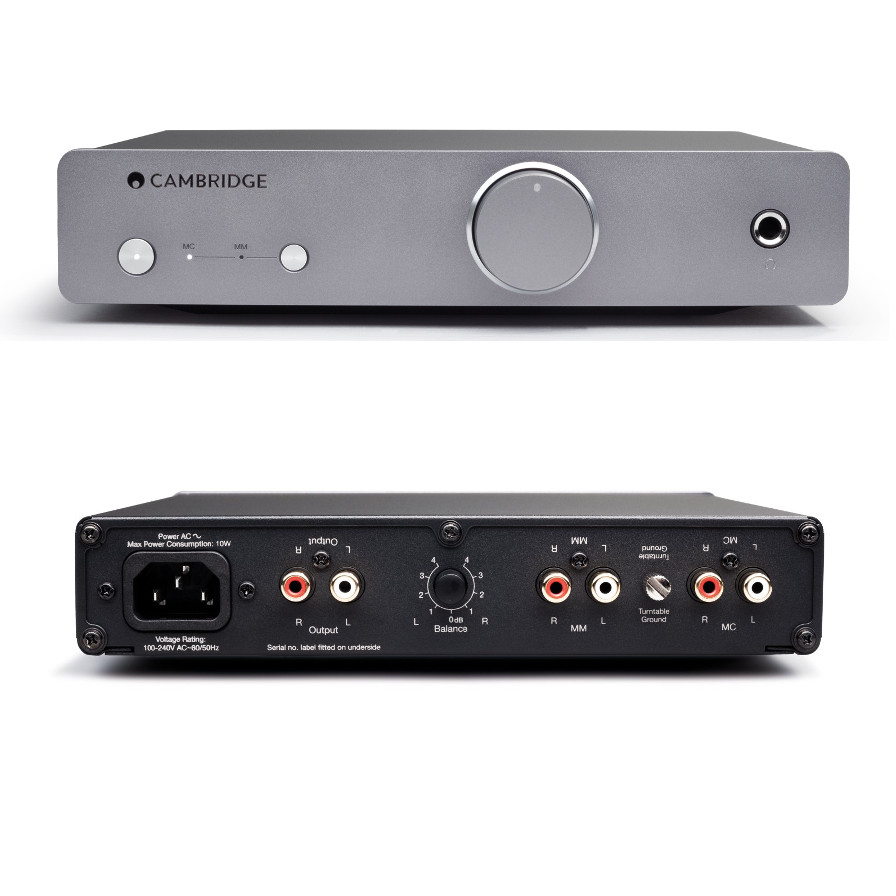
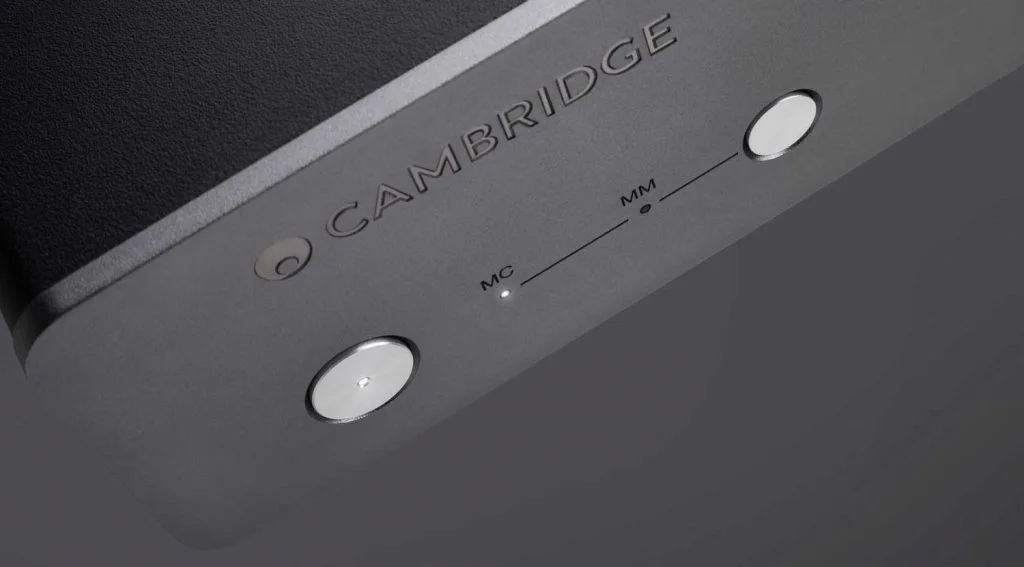
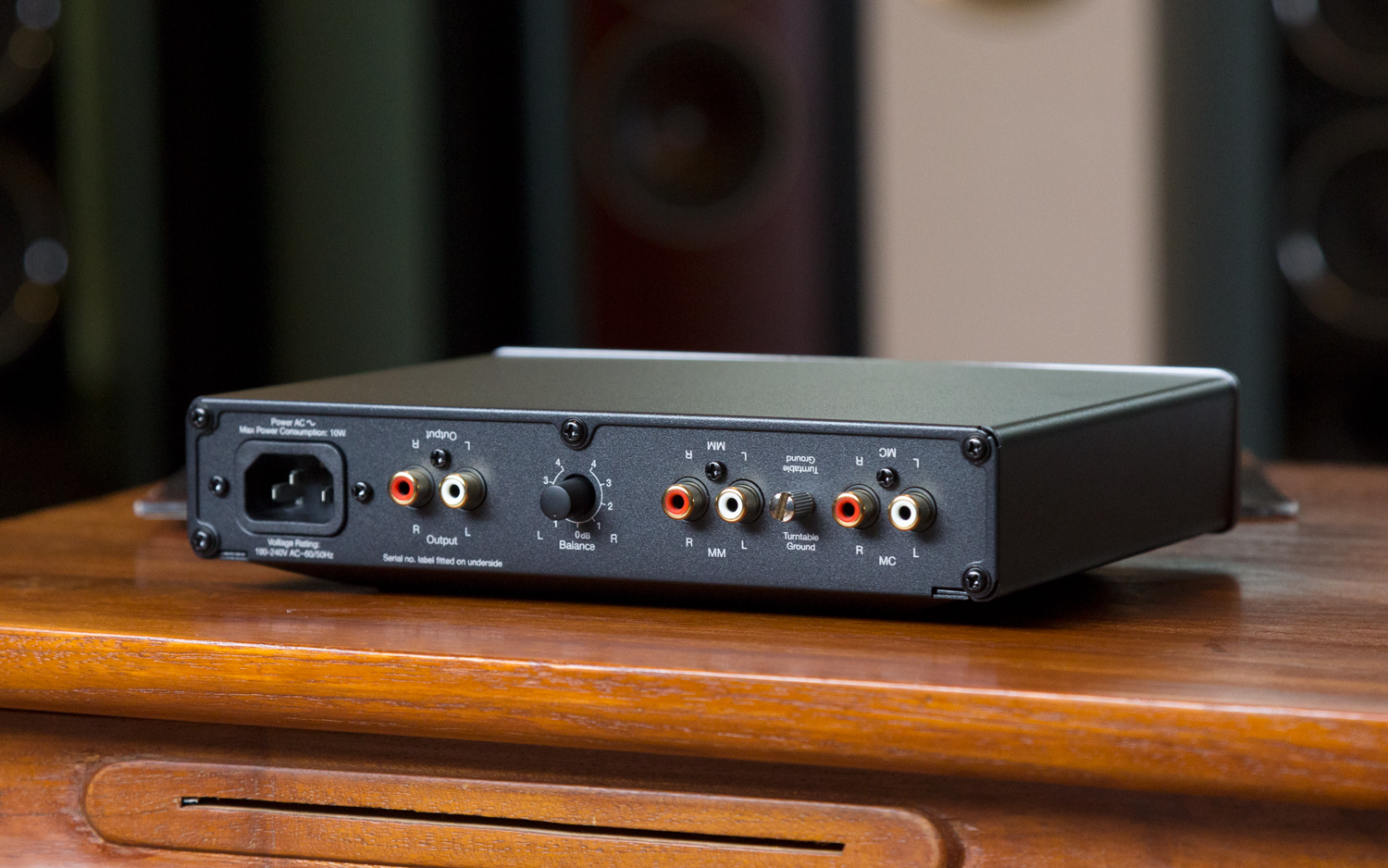

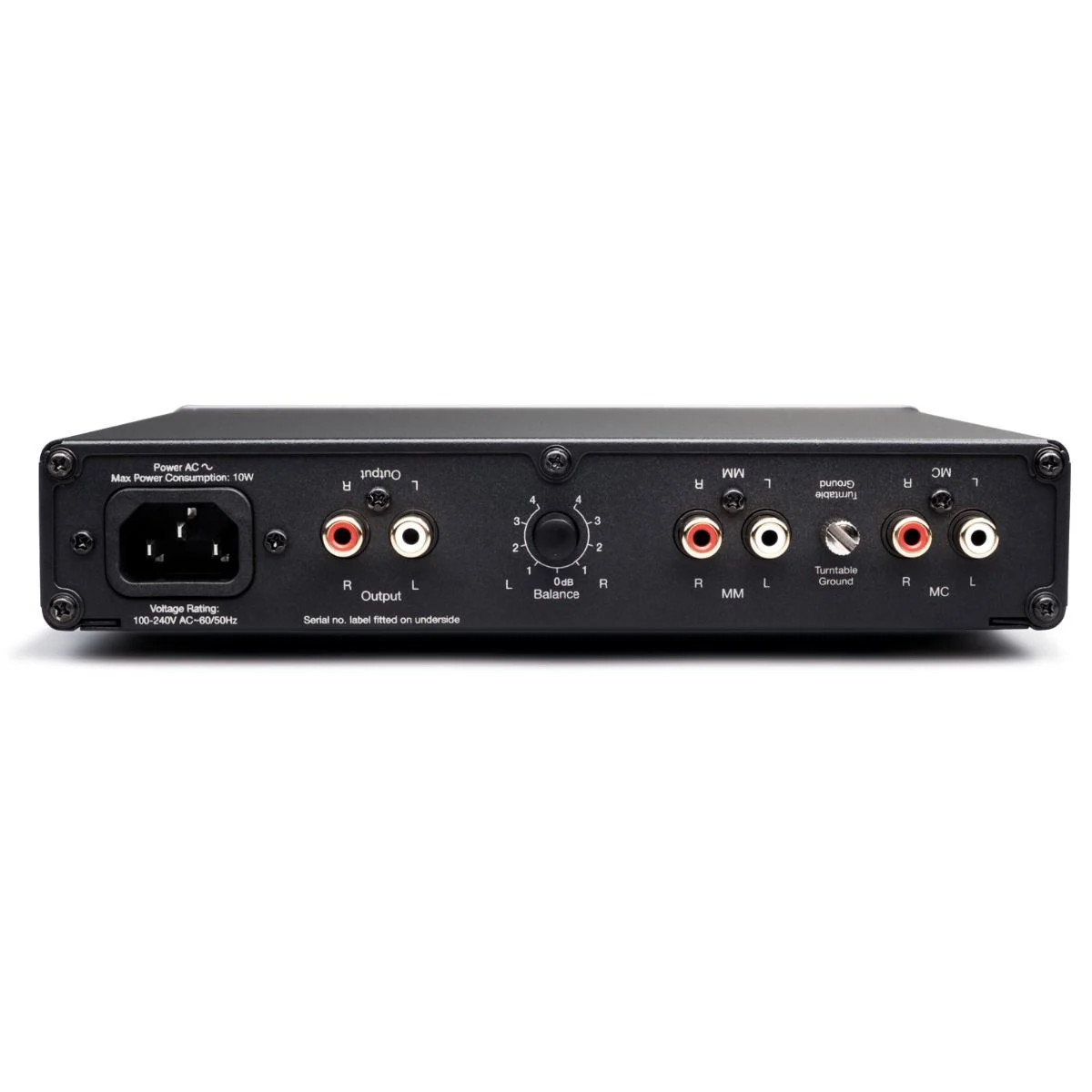
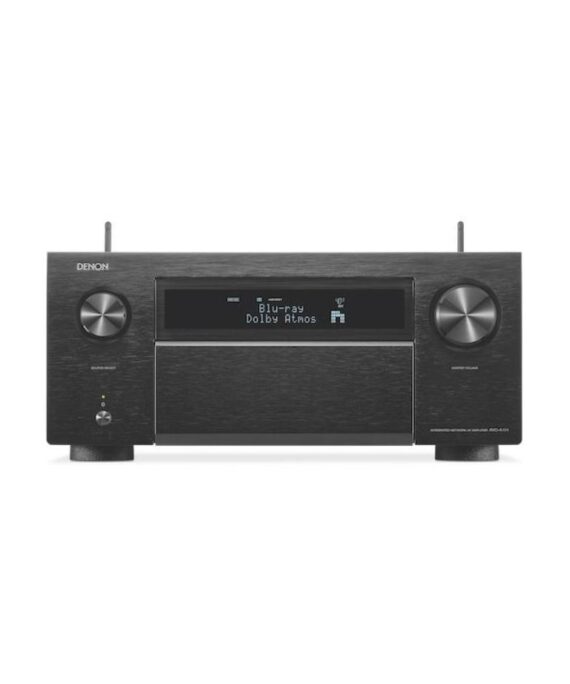

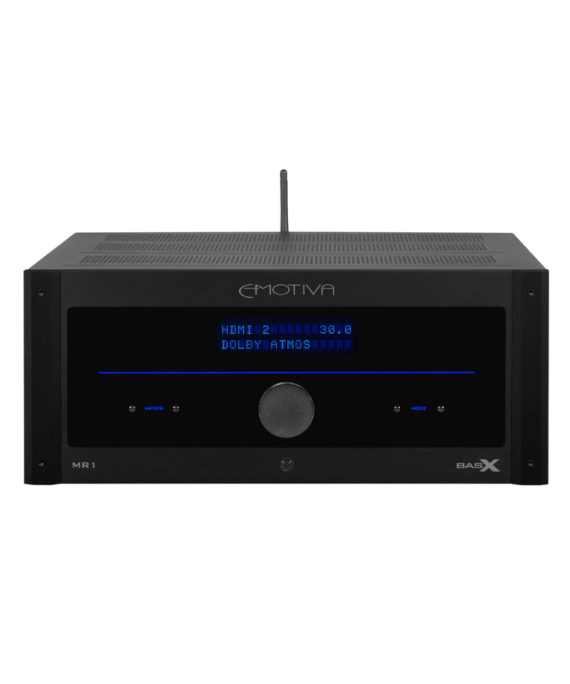
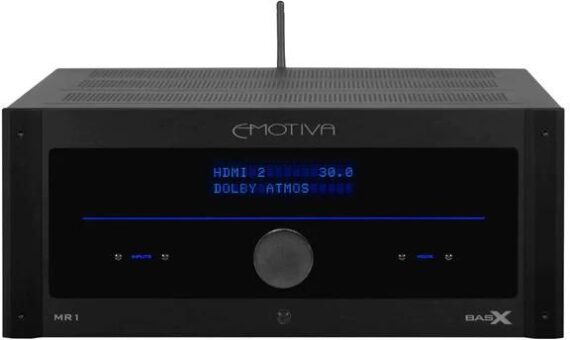
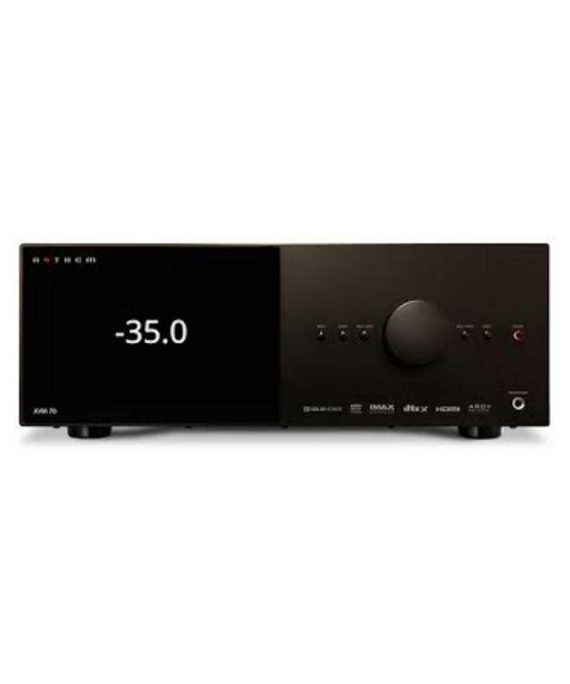
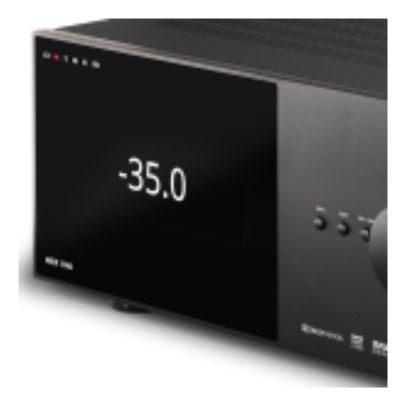

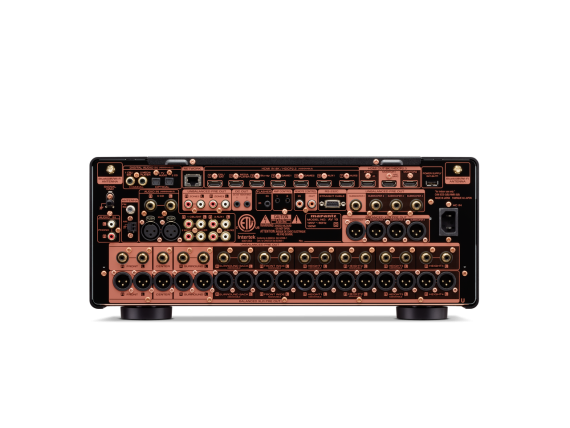
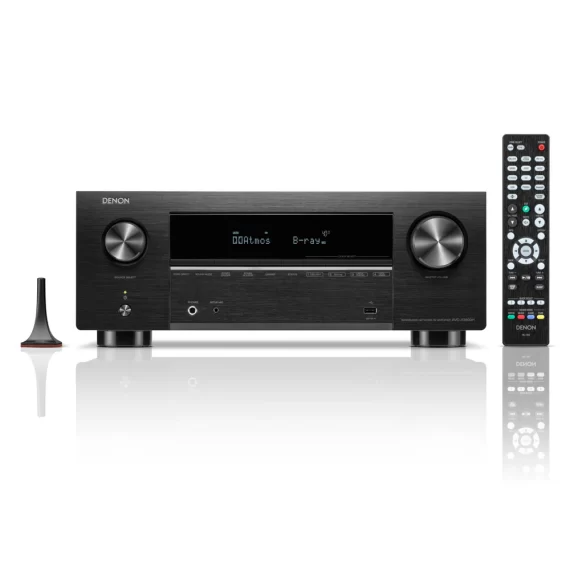
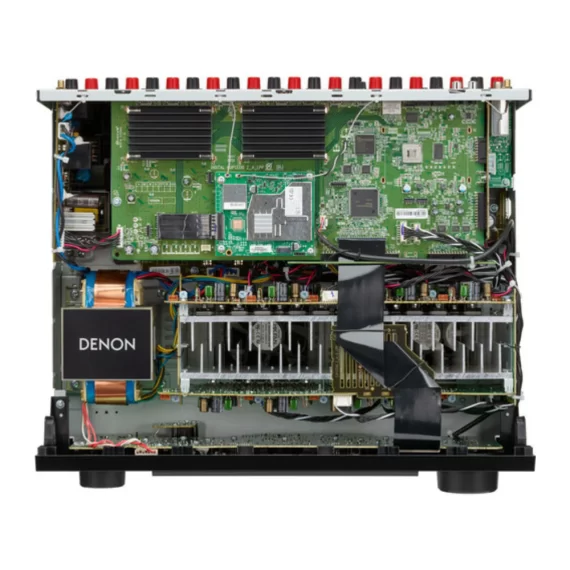
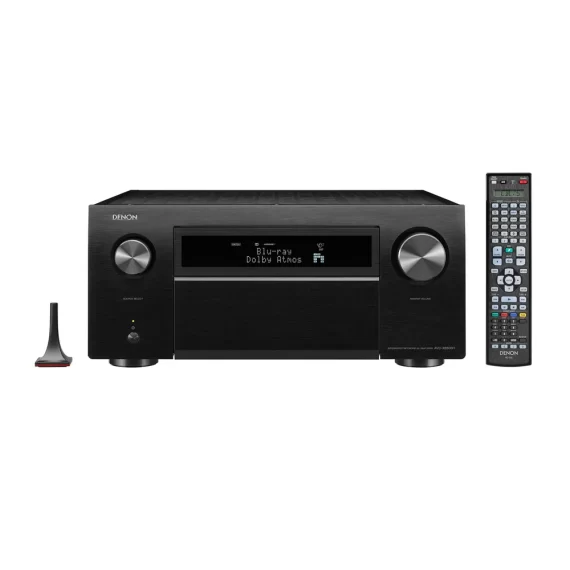
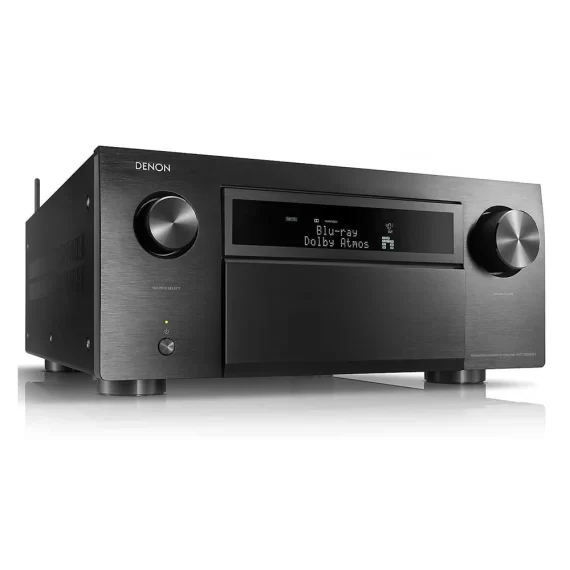
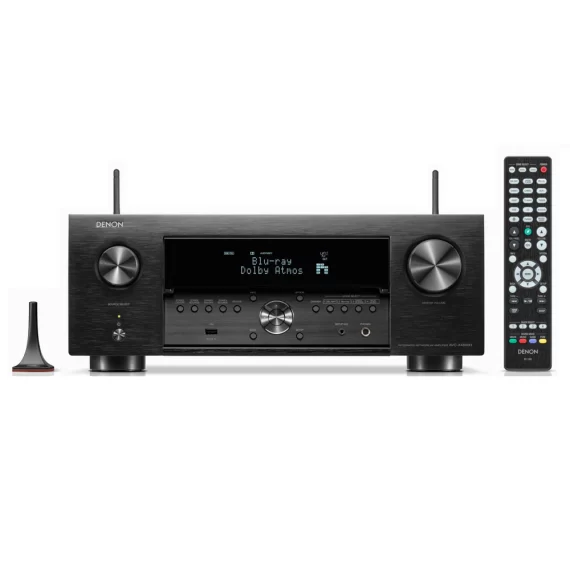
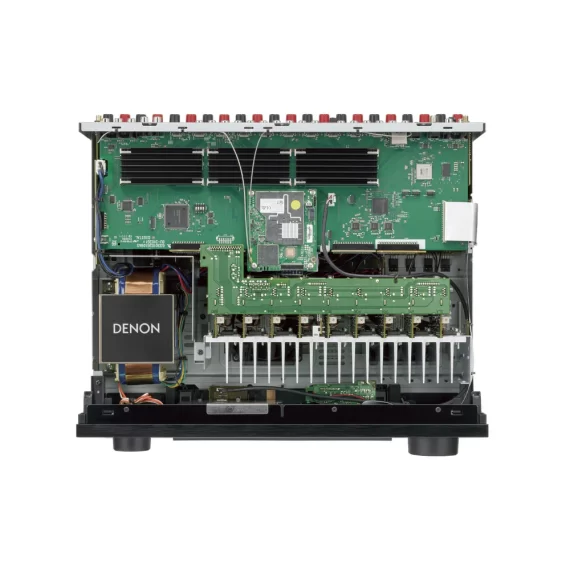
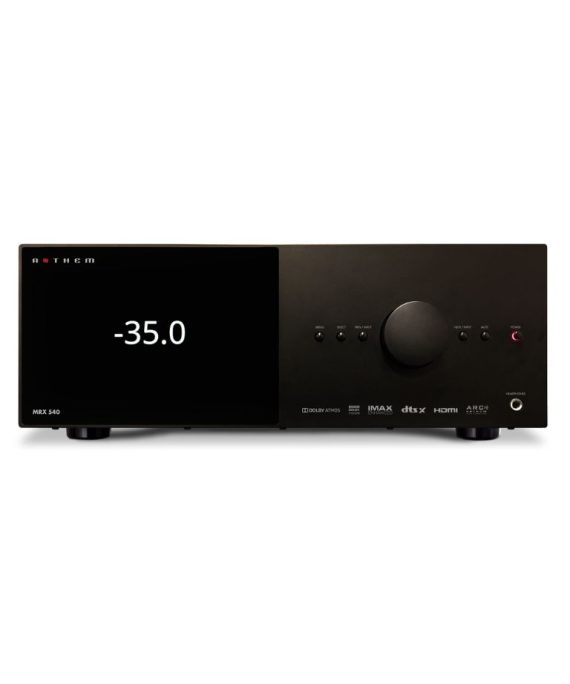
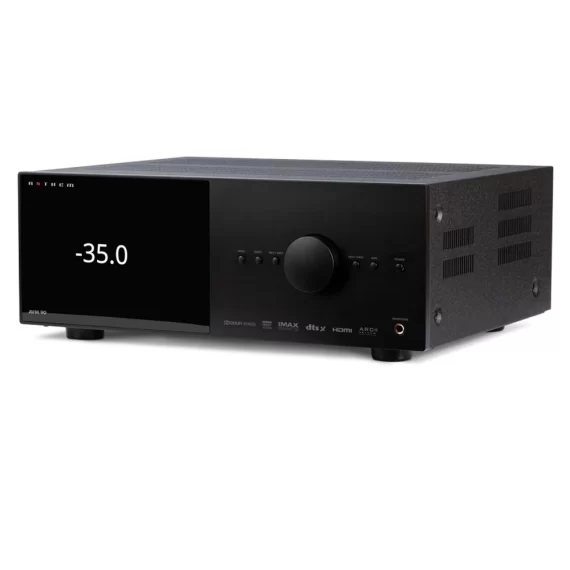
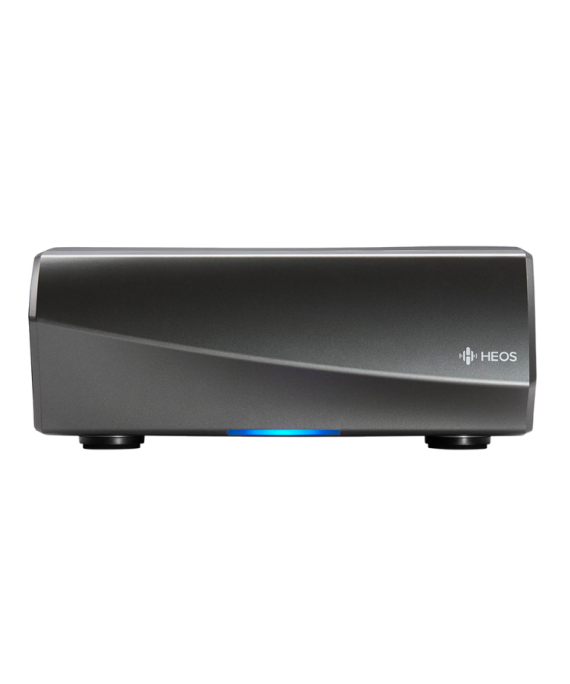
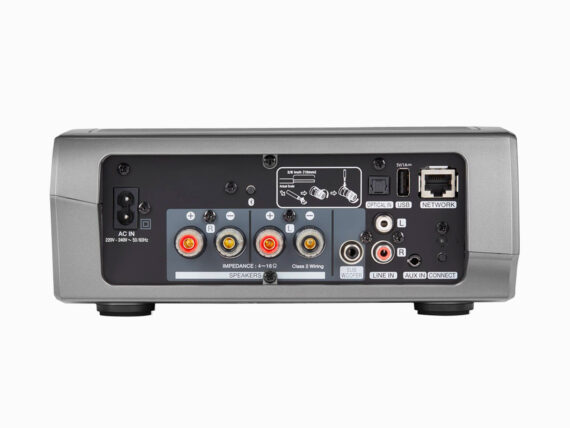
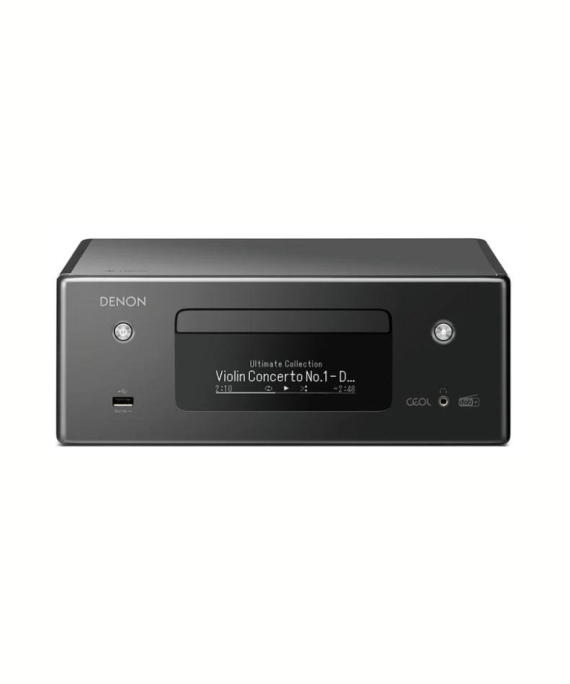
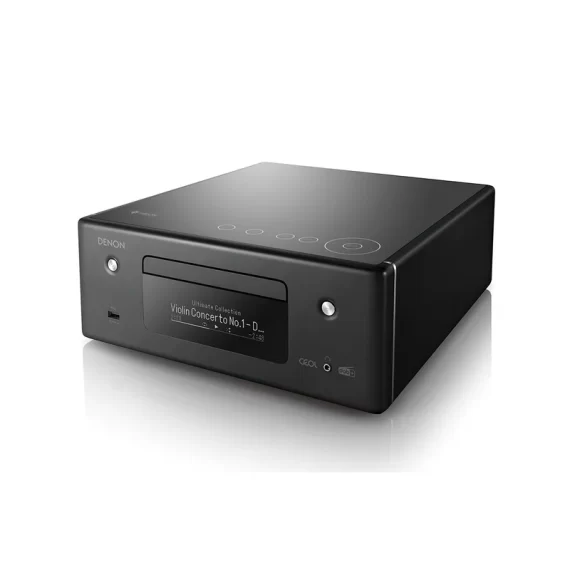



Reviews
There are no reviews yet.